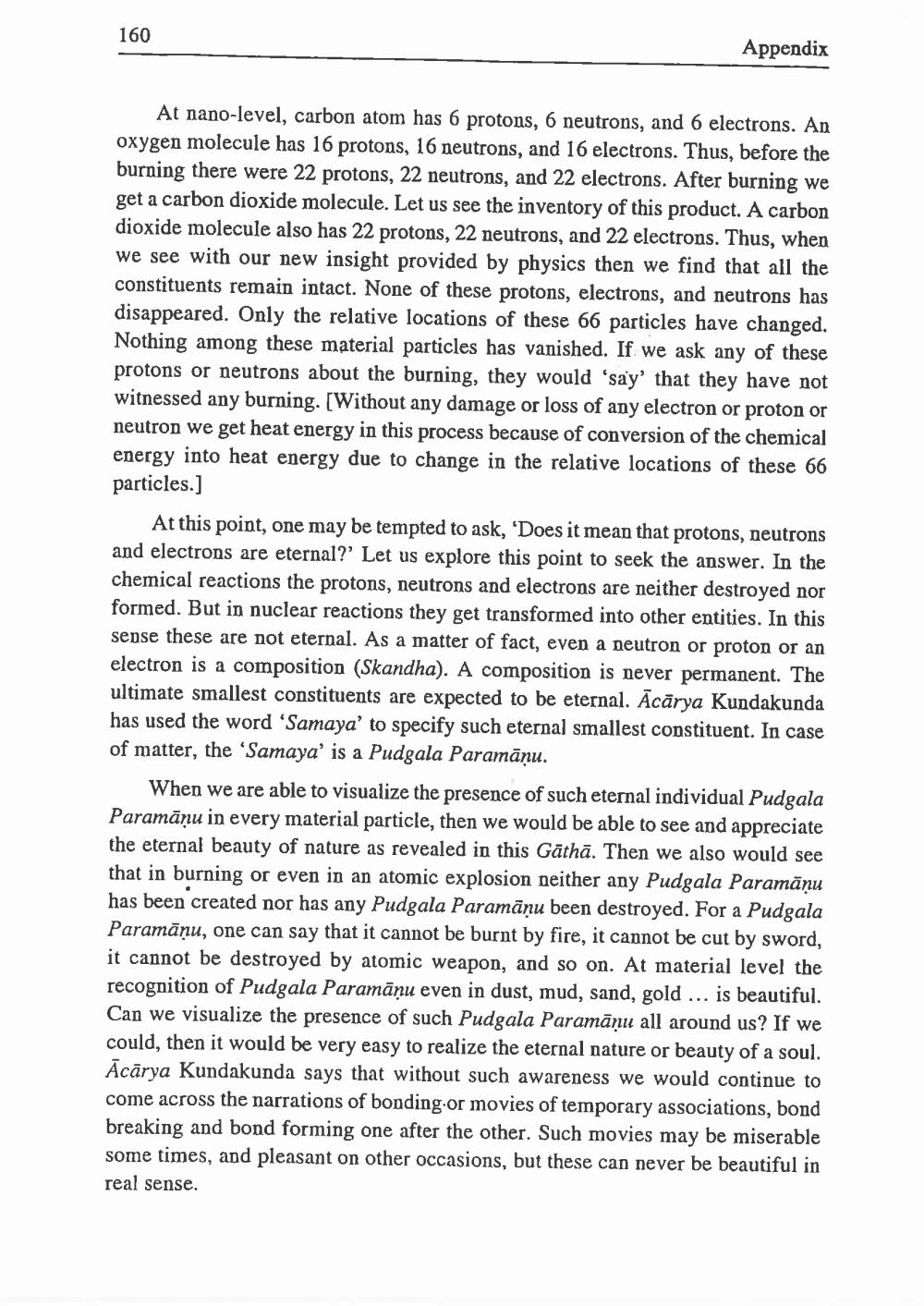________________
160
Appendix
At nano-level, carbon atom has 6 protons, 6 neutrons, and 6 electrons. An oxygen molecule has 16 protons, 16 neutrons, and 16 electrons. Thus, before the burning there were 22 protons, 22 neutrons, and 22 electrons. After burning we get a carbon dioxide molecule. Let us see the inventory of this product. A carbon dioxide molecule also has 22 protons, 22 neutrons, and 22 electrons. Thus, when we see with our new insight provided by physics then we find that all the constituents remain intact. None of these protons, electrons, and neutrons has disappeared. Only the relative locations of these 66 particles have changed. Nothing among these material particles has vanished. If we ask any of these protons or neutrons about the burning, they would say that they have not witnessed any burning. [Without any damage or loss of any electron or proton or neutron we get heat energy in this process because of conversion of the chemical energy into heat energy due to change in the relative locations of these 66 particles.]
At this point, one may be tempted to ask, 'Does it mean that protons, neutrons and electrons are eternal?' Let us explore this point to seek the answer. In the chemical reactions the protons, neutrons and electrons are neither destroyed nor formed. But in nuclear reactions they get transformed into other entities. In this sense these are not eternal. As a matter of fact, even a neutron or proton or an electron is a composition (Skandha). A composition is never permanent. The ultimate smallest constituents are expected to be eternal. Acārya Kundakunda has used the word 'Samaya' to specify such eternal smallest constituent. In case of matter, the 'Samaya' is a Pudgala Paramāņu.
When we are able to visualize the presence of such eternal individual Pudgala Paramānu in every material particle, then we would be able to see and appreciate the eternal beauty of nature as revealed in this Gathā. Then we also would see that in burning or even in an atomic explosion neither any Pudgala Paramāņu has been created nor has any Pudgala Paramānu been destroyed. For a Pudgala Paramāņu, one can say that it cannot be burnt by fire, it cannot be cut by sword, it cannot be destroyed by atomic weapon, and so on. At material level the recognition of Pudgala Paramāņu even in dust, mud, sand, gold ... is beautiful. Can we visualize the presence of such Pudgala Paramāņu all around us? If we could, then it would be very easy to realize the eternal nature or beauty of a soul. Ācārya Kundakunda says that without such awareness we would continue to come across the narrations of bonding.or movies of temporary associations, bond breaking and bond forming one after the other. Such movies may be miserable some times, and pleasant on other occasions, but these can never be beautiful in real sense.




